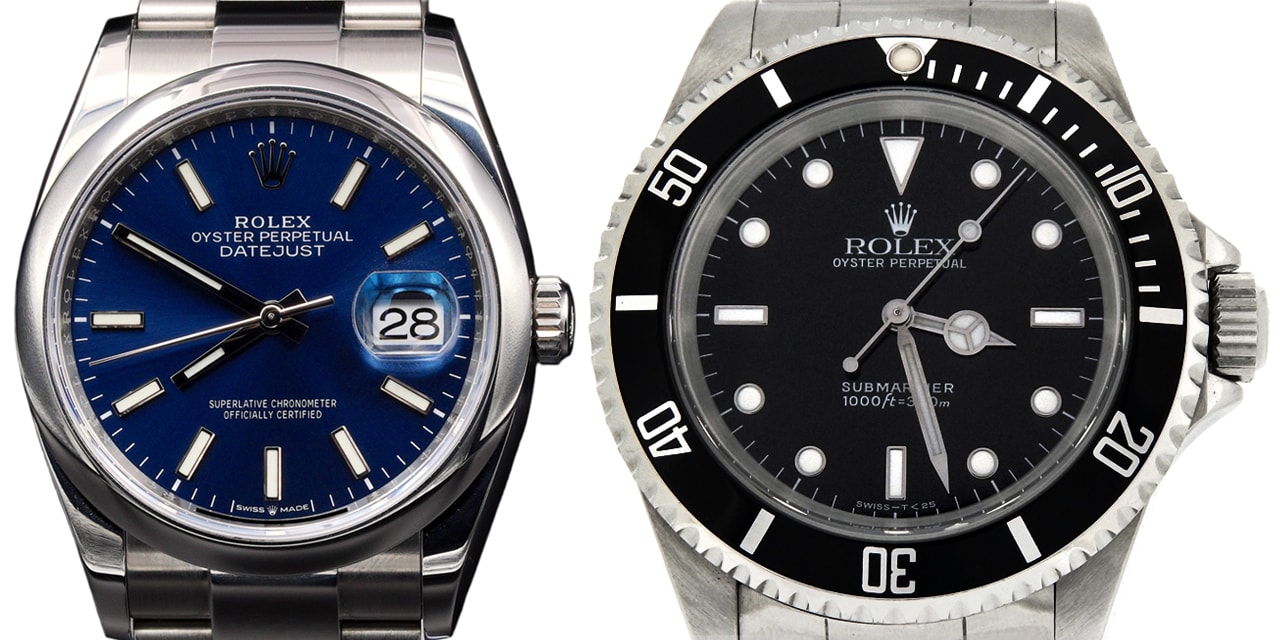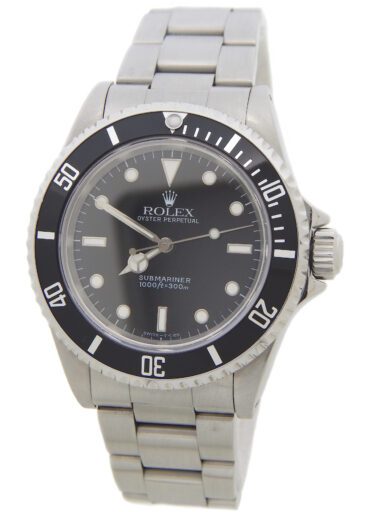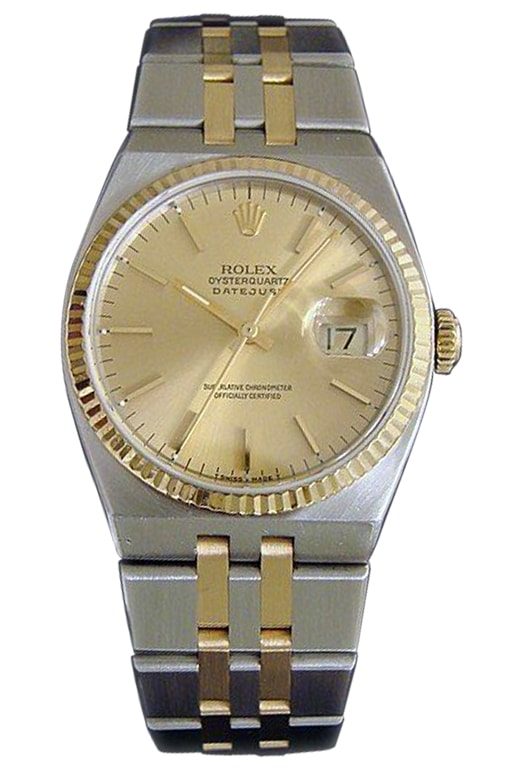The Beckertime Guide to the Best Rolex Watches Under $10,000
Hear ‘Rolex’, think ‘expensive’.
If there is one thing most people, albeit mainly non-horology fans, associate with Rolex it is that their watches cost a fortune. And in many ways, that is exactly what Rolex want them to think.
Back in the brand’s first heyday of the 1950s, they built their reputation solely on the outstanding quality and craftsmanship of their timepieces. Price-wise, they were already at the upper end of the market, but justified that to their customers by pointing to the precision, reliability and robustness of their models, alongside their ground-breaking designs and pioneering style. Adding it all up, the costs were high but warranted.
Then came the quartz crisis. Suddenly, all notions of the impressive accuracy of traditional Swiss timekeeping went out the window, beaten so comprehensively by the battery-powered crystal watches from the east that it wasn’t even a contest. Similarly with the sturdiness of the quartz models. Whether this new breed was as tough or dependable as the average Rolex didn’t really matter; they were so cheap it was no great hardship to simply replace one should it fail. It wasn’t called a crisis for nothing.
But as always when faced with a challenge, Rolex adapted when so many others around them fell. And just like a fighter outmuscled by a larger opponent, they did it by using their enemy’s strength against them.
If the quartz brands had the market sewn up in terms of price and accuracy, Rolex would go the other way and play on emotion. Yes, their rivals might tell the time better, but that was no longer all a watch was for—well, not a Rolex watch anyway.
All at once, a Rolex became evidence of success. They were aspirational. They were what leaders wore. They were what superstars wore. They were backed by decades of heritage, generations of constant honing and refining. They were miraculous little machines, powered by impossibly small works of art built using techniques passed down over centuries.
And all that needed to be paid for.
Rolex’s biggest response to the quartz crisis was to ratchet up their prices. Now they were an investment, a reward for significant achievement, something to be passed down as an heirloom. Models which had started life as tool watches were now issued in precious metals, sometimes with gemstone accents on the hour markers or even completely pavé dials. A Submariner became a status symbol rather than a diving safety backup. ‘Rolex is not in the watch business. We are in the luxury business,’ as CEO André Heiniger famously quoted to a friend.
The accompanying marketing bonanza elevated the brand into that rarefied sphere inhabited by the world’s winners; the rich and powerful who demanded the best and were prepared to meet any price.
It is from this that the pervading notion that all Rolex watches are expensive comes. But is it true?
The $5,000 to $10,000 Spread
While the cost of a brand new Rolex straight from the manufacture increases year on year, the preowned market fluctuates just as with any other luxury item. And there has seldom been a better time to buy than right now.
Since the incredible highs of 2022, when models such as the steel Daytona ref. 116500 was regularly commanding upwards of $45,000 against a retail price of around $14,000, things have gone through a correction which puts some fantastic watches within reach of far more budgets. Today, that $5k to $10k range contains some absolute icons, and below, we have picked out three of our favorites.
If You Want the Definition of the Word Classic
The Rolex Submariner ref. 14060
Some people have a collection of Rolex watches. Others only buy one. And some intend to only buy one and wind up with a collection. For all those groups, a no-date Submariner is, if not technically compulsory, certainly very near the top of the list.
Before we go any further, let’s sort out the nomenclature for the purists. Strictly speaking, a Submariner without a date function is called a Submariner. A Submariner with a date function is called a Submariner Date. The former came first, in 1953 to be exact. The latter didn’t arrive until 1968 (or thereabouts) and split the range in two. Since then, the Submariner Date has been issued in all sorts of finery, with white or yellow solid gold references along with Rolesor models and diamond-encrusted blingery, while the Submariner has remained as it has always been, an exclusively stainless steel model. From that, it is easy to see why the no date watch has always been the favorite among the old guard.
The ref. 14060 is a neo-vintage classic and the replacement for the vintage classic, the ref. 5513. That was the reference which brought the Sub all the way from the early ‘60s into the 1990s, an especially long run and one during which a whole host of modernizations came to the fore. As a result, while the two generations of the model look relatively similar to each other, the ref. 14060 is a much upgraded and improved upon product.
It was, for example, the first Submariner to have both a sapphire crystal and a Triplock crown, working together to grant an increased water resistance of 300m, or 1,000ft—a sizeable jump (or should that be plunge) from the ref. 5513’s 200m. It was also the first with a unidirectional bezel, a modest yet vital safety feature which prevents divers overstaying their welcome in the depths and which was still protected under patent by Blancpain until the early ‘80s.
But what makes the ref. 14060 such a desired model among fans is that it manages to blend those contemporary conveniences with all the retro cool which put the Sub on the map to begin with; and it was the last one to do it.
So, the case is 40mm and has all the gentle sweeps and curves of yesteryear while the dial has the pre-Maxi indexes and handset, leaving a less crowded face. The bezel insert is still aluminum and although modern Cerachrom might objectively outperform aluminum in every way, it is the very fact that vintage inserts fade and discolor in the sun or when exposed to seawater that collectors love. It means each one eventually becomes unique, whereas the current crop will stay looking box fresh forever.
Inside is the superb Cal. 3000, a non-chronometer movement which nevertheless performs exceptionally. More importantly, it makes the ref. 14060 a two-liner—the dial has just two lines of text below the spindle, missing out the ‘Superlative Chronometer Officially Certified’ script which some ultra-traditionalists object to on an aesthetics basis.
Best of all, you will struggle to find many examples of the reference priced at more than $10,000. The Cal. 3000 was a particularly simple movement, with not even a Breguet overcoil on the hairspring, and was used to keep costs down. Coupled with the reference’s impressive 20-year run, it means there are plenty on the preowned market from which to choose and most live in the $7,000 to $10,000 space.
If you are a ‘one good watch to last a lifetime’ type, I can’t recommend it highly enough.
If You Want the Closest Thing to a Rolex Build-a-Watch
The Rolex Datejust ref. 126200
Rolex’s pivotal legend, the Datejust is very much a horological sundae bar.
The manufacture gives you the basic watch, and you get to pick and choose pretty much whatever toppings you would like to go with it. On offer are a variety of different metals and case diameters, several types of bracelet, a handful of bezel styles and an absolute multitude of dial designs.
Consequently, there are about a bajillion versions out there, either in the current collection or historically from its near 80-year run, until you’re looking at as many examples of the Datejust as there are wearers.
Obviously, there is no such thing as the ‘best’ one, only the one which best suits your tastes, but with Rolex regarding the piece as their everyman watch, the perfect match is definitely waiting for you somewhere.
Most significantly however, there has never been any sort of artificial production restrictions put on the Datejust, leading to no shortage of preowned models and all at very reasonable prices.
The ref. 126200 is one such specimen. From the contemporary series launched in 2018, the reference is a 36mm watch, once the top end but now regarded as a mid-size in the four-size range following the introduction of the 41mm. Outwardly, the foundations of the Datejust have been immune to tinkering since about 1959, but the innards have experienced an almost constant state of flux for the last seven decades. This latest effort sees the old warhorse adopting Rolex’s very latest generation of time and date calibers, the Chronergy-equipped, radically efficient Cal. 3235.
Compared to some, the ref. 126200 lies at the more reserved end of the Datejust spectrum. The stainless steel case is topped with a smooth, polished bezel and can be had with a small selection of understated dial colors. Black, white, blue, silver and green, along with the extremely popular slate grey Wimbledon dial make up the assembly, and you can choose between the sporty and utilitarian Oyster bracelet with its three links or the more elaborate five-link Jubilee.
Hour markers are plain batons across the board except for the Wimbledon’s green Roman numerals and the handset is the standard stick type.
The Datejust has long been the blueprint for what a watch should look like, none more so than the 36mm steel models. And you can get your hands on one of the newest versions for less than $10,000.
If You Want Perhaps Vintage Rolex’s Biggest Bargain
The Rolex Oysterquartz Datejust ref. 17013
Rolex might have survived the quartz crisis with a brilliant repositioning strategy, but that doesn’t mean they eschewed quartz technology altogether.
I’ve written about the ins and outs of the brand’s contribution to the Swiss fightback before; the Centre Electronique Horloger (CEH), the Beta-21, the revolutionary ref. 5100, etc.
The upshot of the whole thing was that, in 1977, Rolex released a pair of quartz watches of their own, powered by two of the most advanced and almost unbelievably accurate quartz movements ever made before or since.
Each model was based, quite loosely as it turned out, on the manufacture’s dress watch duo, the Day-Date and the Datejust. True to form, the President was available only in gold, while the more all-encompassing Datejust got both full steel and Rolesor two-tone versions. But the styling of the two was a world away from the mechanical variants, with sharp angles where there were once soft cambers and integrated bracelets which were pure undiluted 1970s.
Strangely enough, considering you get the feeling Rolex was doing all this out of sufferance and would much rather have stuck to their relentless perfecting of traditional watchmaking, the Oysterquartz models (as they were so named) were particularly enticing prospects.
Not only were they streets ahead of their conventional fare in terms of timekeeping, the relative ease of production compared to the world of springs and tiny gears led to them being some of the most affordable pieces in the catalog.
Even so, the production figures have become famous in their own right. Whereas Rolex now makes somewhere in the region of a million watches a year, in the quarter century the Oysterquartz watches were on their books, they only managed to churn out around 25,000, or about 1,000 annually, split across both models.
So, we have rare Rolex creations, massive outliers and a fascinating diversion in the brand’s chronicle, with the most accurate movement they have ever made. All that must lead up to some of those outrageous prices we have gotten used to seeing for the likes of first gen Paul Newman’s or maybe a Jean-Claude Killy Dato-Compax, right?
Actually, no. You can easily pick up a Rolesor Oysterquartz Datejust ref. 17013 for a little over $5,000. Why they are still so cheap is anyone’s guess. The styling is definitely a departure from the established, but as it was clearly inspired by the AP Royal Oak and Patek Nautilus, it is now unashamedly cool. Plus, you have that rarity/exclusivity factor every watch collector prizes above nearly everything else. Rolex is still perfectly happy to service these pieces and new batteries can be sourced from just about any watchmaker in the world.
It is all a bit of a mystery, but it works out as great news for us. One of the very best vintage quartz watches you can buy is extremely affordable. Sign me up!
Featured Photo: BeckerTime’s Archive.












